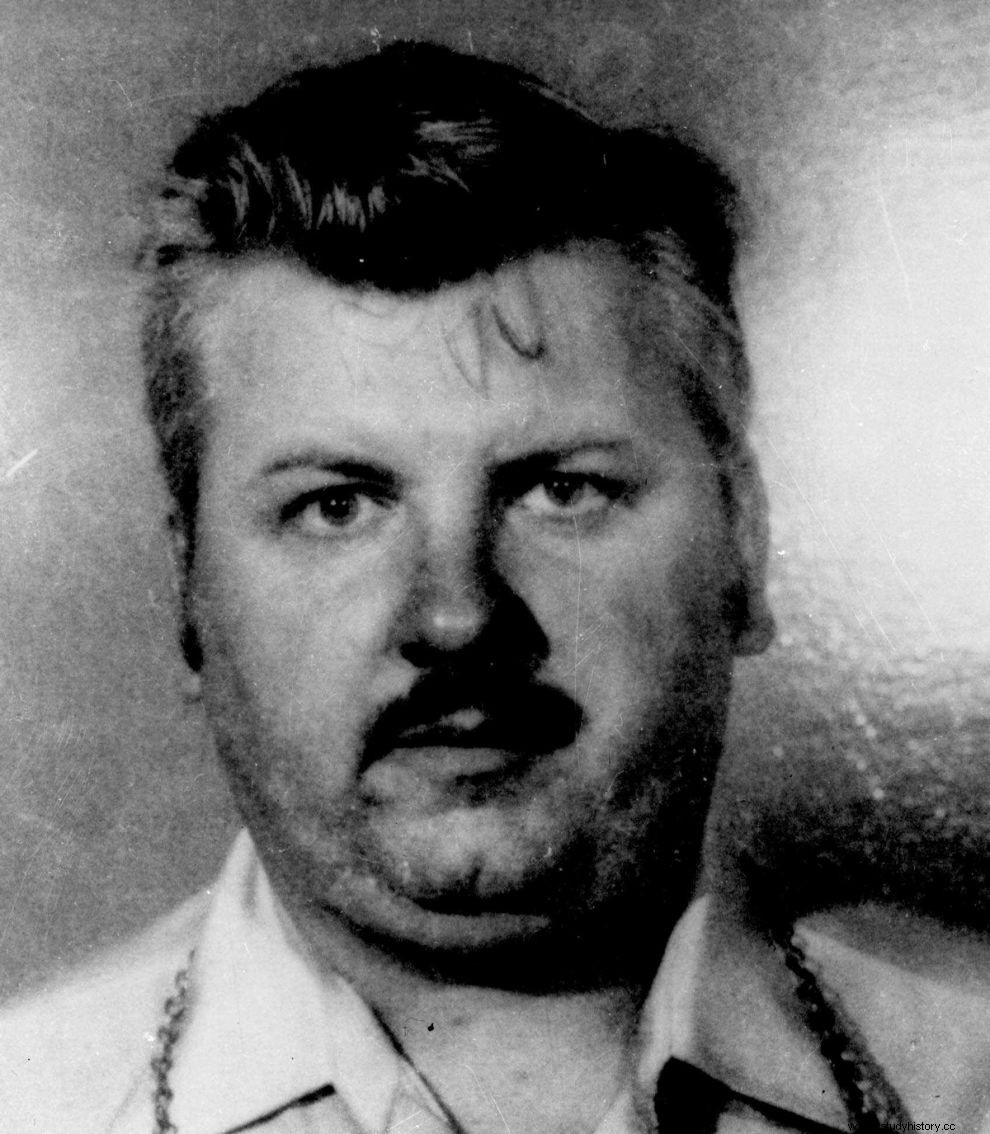The name John Wayne Gacy couldn't be more reminiscent of someone who would become one of America's most notorious serial killers. The killer who went on a rampage in the 1970s killing a total of 33 young men was a self-made neighbor of many things to those around him, with the profile of family man (twice married with five children) and politically aware citizen.
He had painstakingly created an image that hid his gruesome action. Gacy was the chairman of his local Democratic district, head of a civic group working to improve social skills for young people, and a successful contractor who ran his own business while also working as a part-time clown at parties and children's parties. party.
The official Netflix summary
Lunch with the mighty. Chase the weak. His laugh was the terrifying dark mask of a sadistic serial killer.
The chilling story of John Wayne Gacy has now come to the Netflix platform in the mini-show "Conversations with a Killer:The John Wayne Gacy Tapes " (Conversation with a Killer:John Wayne Gacy), directed by Emmy Award-winning and Oscar-nominated Joe Berlinger . The series entered the Top 10 of the platform with "good morning". And not without reason.
"The people who do evil in this world are the people you trust most often and you don't expect them to do something heinous," Berlinger told MovieMaker of the production.
The miniseries features previously unknown recordings from the serial killer's interrogation, while new interviews with investigators and survivors are presented.
In the tapes, John Wayne Gacy can be heard bragging to their lawyers about the way he fooled the police and admitting that he didn't even think of his victims as people. In fact, 29 of his 33 victims were found buried under his home in Norwood Park, Illinois, about 25 minutes from Chicago. He himself considered that they were "his" and that no one had a right to their dead bodies.
The serial killer who was executed in 1994 looked for his victims not only in his circle but also in streets where young boys were being sold for a little money. Some of his victims were young people who worked in his office doing renovations.
"Can you imagine living next door to a house where dozens of people are buried, and yet you think he's a good guy and want to go to the next party where he's clowning around?" asks the show's director. "That duality is awesome, finding out that most crimes are committed by guys who are above suspicion," Berlinger says.
"We are talking about the 1970s, when homosexuality was still being discussed as a possible disease. These perceptions of that time maintained an indifference to a growing number of children who were disappearing and simply not being recorded anywhere for years. Children who were afraid of talk, they didn't tell their parents the truth about what they were going through, because they were hiding that they were gay. They were living a clandestine life. That fact, Gacy took advantage of," continued Berlinger, who tried to outline the serial killer's actions and motivations .

How he trapped the victims
Gacy used to lure the young men he targeted with money, with the promise of sex with them. He would drive them to his house, offer them alcohol and drugs, then show them a "trick" using a pair of handcuffs.
Gacy tied his hands behind his own back, freeing himself with a key hidden between his fingers, before offering to show his victim how to do the same trick. He then immobilized the men, forced them with objects and tortured them until they breathed their last. He usually strangled them with a rope. Police began investigating Gacy after the disappearance of Robert Piest, a 15-year-old pharmacy worker.
A colleague of Piest's had seen him talking to Gacy outside the shop before he disappeared. While searching Gacy's home, officers found police badges, a handgun, bottles of Valium, other substances and underwear. Fifty years later, scientists are still trying to identify all of his victims through DNA. Only 27 of the bodies were identified. Six were never identified, while one was identified in 2021.
Gacy was eventually found guilty of 33 counts of murder in March 1980 and sentenced to death, but remained in his cell for 14 years. Gacy's last meal, on May 9, 1994, was a bucket of chicken nuggets, fried shrimp, fresh strawberry fries and a diet soda. He remained unrepentant until he passed out, and as recorded, his last words were "kiss me sir". Outside Menard Correctional Center where the execution took place, over 1000 people had gathered.
Gacy was eventually found guilty of 33 counts of murder in March 1980 and sentenced to death, but remained in his cell for 14 years.
It is unclear whether Gacy's story ultimately inspired Stephen King to write "It," but there are reports. Anyway, King's novel was written between 1978 and 1981, the time when the authorities were led to arrest the man who acted as a clown at events and charity galas, under the name "Pogo".
In any case, when Gacy confessed to the 33 murders, he was the most bloodthirsty serial killer in the US until he was caught.
Conversations With a Killer follows the same structure we saw in The Ted Bundy Tapes. It combines interviews with audio, and revolves around people who knew Gacy as a prominent local business owner and family man, and victims who escaped at the last minute.

In the audio, he himself does not admit homosexuality. As she says, she "never made love" to boys. His crimes were "favored" by the "gay panic" of the 70s, and his aim was to express "his sadism" in action. Even those victims who survived were afraid to go to the authorities, as they would either be targeted as "abnormal", or no one would believe them.
The special feature of Gacy, which emerges from the 60 hours of recordings of his lawyers, is that until the last hour before he was executed by lethal injection, he tried to justify everything. As mentioned in the documentary, he had an answer for everything. He never shed light on his motives, instead seducing his interlocutor into a relentless delusional delirium of "confessions." He even constantly tried to blame the people he killed, describing them as "male prostitutes", "crooks", "runaways" and "liars".
He was finally betrayed by the smell of decaying flesh in his own home. At his trial, Gacy pleaded insanity, attributing his deadly crimes to his alter-ego, "Bad Jack".
In the documentary Joe Berlinger who won an award for The Ted Bundy Tapes, however, seems to be more interested in the historical context of the time and the social stigmatization of a large group of people, which served as a cover for the horror. Berlinger's attempt comes in some ways as a historical backdrop to 2021's "John Wayne Gacy:Devil in Disguise."
If there's one main takeaway from the new documentary, it's the pervasive homophobia expressed in Gacy's own words. The terrible thing is that Gacy had been convicted in 1968 for "sodomy" of two minor boys, however, time allowed him to "come back", as a respectable citizen, above all suspicion, due to the good relations he had with the local politicians who gathered around from the doctrine of homophobia.
After Gacy was confirmed dead at 12:58 a.m. on May 10, 1994, his brain was removed and passed into the possession of psychiatrist Helen Morrison, who also interviewed other serial killers in an attempt to isolate common personality traits of violent sociopaths.
